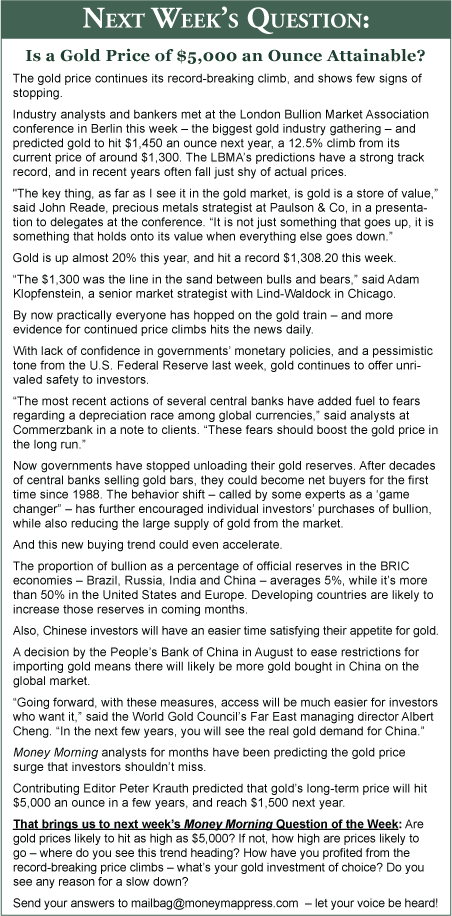Just after we published our special report on "junk silver" earlier this week, a Money Morning reader posed the following two questions:
- How many troy ounces of silver is contained in a bag of new coins?
- What should investors expect the total weight of the average bag of junk silver to be?
Let's take a look...

So-called "junk silver" is made up of 90% pure silver and 10% copper.
However, because these pre-1965 coins were in circulation for decades, they've lost some of their weight along the way.
Physical use has eroded both the silver and copper content, most of which happened over the first 20 years or so of the coin's life.
But because most of these coins have been stashed away and/or collected for decades, it's pretty safe to say that their rate of erosion has slowed dramatically.
A $100 face-value bag of uncirculated coins would actually contain 90 troy ounces of silver. But the wear-and-tear most of these coins have endured has left that same bag with, on average, only 71.2 troy ounces today.
The $1,000 face value bags contain, of course, 10 times that amount - or 712 silver troy ounces.
Here's what's interesting: While silver-containing coins are technically still in circulation - they're still accepted as legal tender - refiners are now allowed to melt down the coins and extract the silver content.
So you could still come across a pre-1965 coin when a merchant gives you change, though that's less likely with each passing day - especially since we're in the midst of a secular bull market for silver.
If it does happen to you, I suggest you hold onto it. It's a complete reversal on the old financial aphorism that "money isn't worth what it used to be."
When it comes to junk-silver coins, the actual value is a lot more than the face value would indicate.
On the practical side, in case you look to buy, ship, or store some junk silver, you may like to know what the stuff weighs: Well, $100 face-value bags are 5.5 lbs., while their $1,000 face-value counterparts will run 55 lbs.
[Editor's Note: Peter Krauth, a frequent contributor to Money Morning, is the editor of the Global Resource Alert, a private advisory service that focuses on precious metals, energy commodities and other natural-resource-related topics. Krauth spent two decades as a market analyst and portfolio advisor, and has covered all the commodities sectors, including gold, silver, coal, alternative energy and agriculture. He even makes his home in Canada - to be closer to the action. And several of his recent predictions have generated a genuine Internet buzz.
To read the original report on "junk silver," please click here. To find out more about commodities, or the Global Resource Alert, please click here.]
News and Related Story Links:
- Money Morning Investment Research:
Special Report: Though it's Called "Junk Silver," the Profits Aren't Trash - Money Morning Investment Research:
Special Report: How to Buy Silver - Money Morning Investment Research:
Investing in Silver: Three Ways to Profit From the Projected Breakout - YouTube.com:
Ron Paul: "Money Isn't Worth What it Used to Be"


